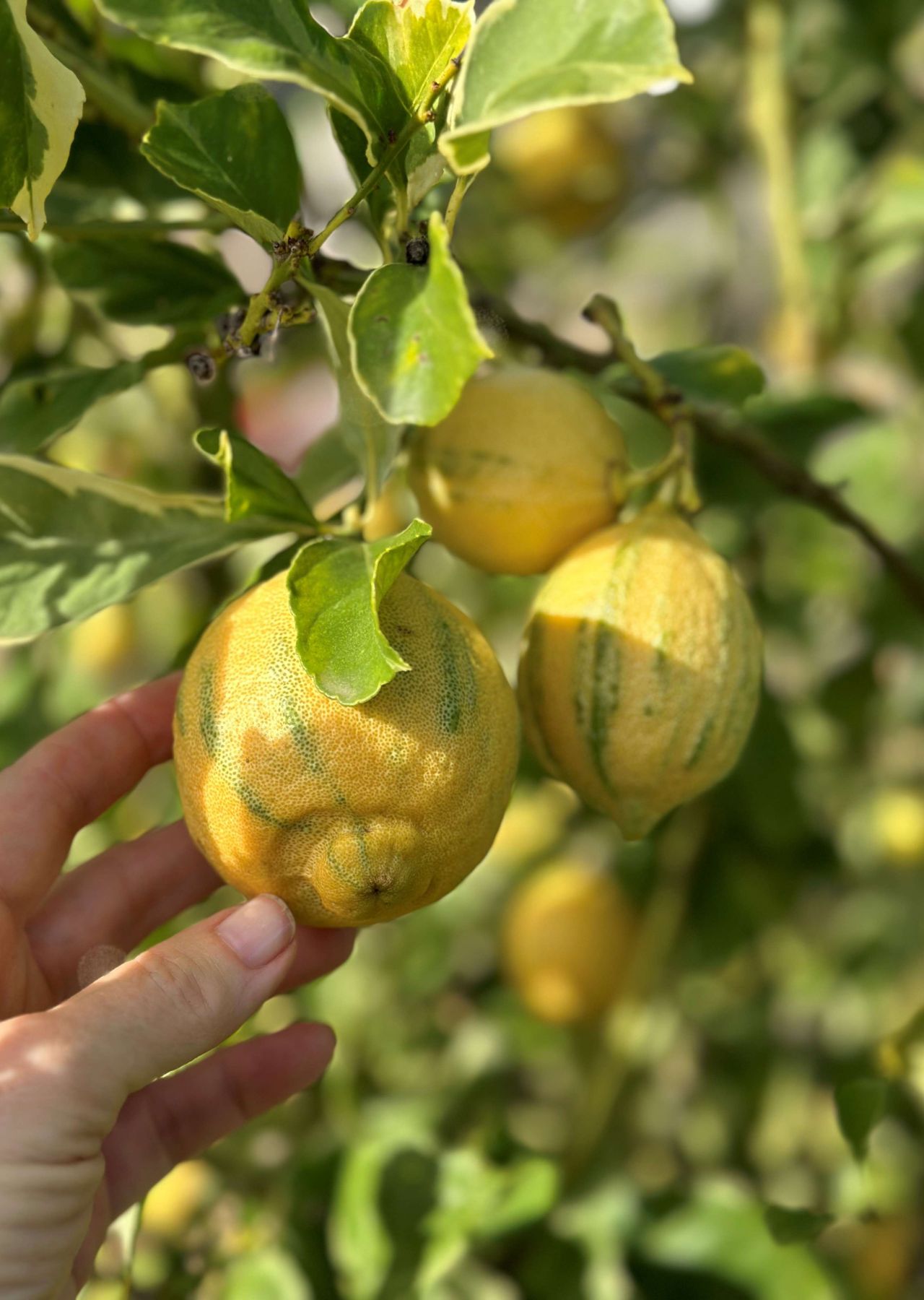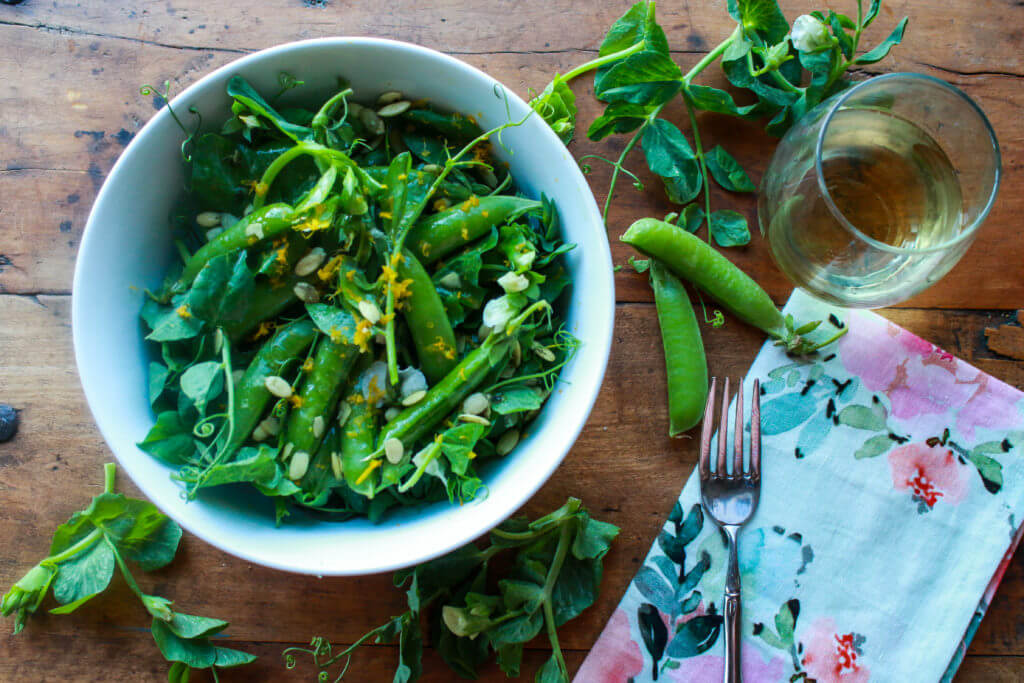Open your eyes to bright and promising citrus health benefits with this guide to citrus nutrition, citrus cooking tips, a citrus fruits list, and lots of healthy citrus recipes.
Is there nothing better than the bright flavor, aroma, and color of citrus in your kitchen? Around the globe, citrus fruits, grown on flowering citrus trees and shrubs, such as oranges, pomelos, grapefruit, kumquats, lemons, and limes, are among the most popular fruits because of their tangy flavor and potent nutrient lineup. Originating in Southeast Asia in 4,000 BC, citrus fruits, a part of the rue family, soon conquered the world, as they became cultivated and incorporated into the food culture in many countries. The American Southern tradition of lemonade, along with Scottish marmalades, and North Africa’s preserved lemons are a few examples of the way people have used their prized citrus. Living in Ojai, California, I am surrounded by citrus, and have 20 varieties of trees growing in my garden, from well known Valencia oranges to more unusual types, like Pink Lemonade Lemons, Pixie Tangerines, Cara Cara Oranges, and Oro Blanco Grapefruit. I use citrus in my kitchen every day, for flavor and health.

Powerful Citrus Nutrition
Citrus fruits are most famous for their high vitamin C content—just one large orange provides 163% DV (Percent Daily Value, based on 2,000 calories per day.) Vitamin C is important for many body functions, including maintaining bones, teeth, muscles, skin, ligaments and blood vessels; acting as an antioxidant to fight damaging free radicals that can lead to disease, healing wounds, and promoting a healthy immune function. In fact, 16th century seamen figured out that if they stocked their ships with citrus fruit, they could avoid scurvy—a condition marked by lethargy and spongy gums due to vitamin C deficiency—that occurred during long periods at sea.
But vitamin C isn’t the only nutrient you’ll garner from citrus; the fruits are rich in essential vitamins and minerals, like potassium, folate, calcium, thiamin, niacin, vitamin B6, phosphorus, magnesium, copper, riboflavin, and pantothenic acid, as well as fibers like pectin and lignin, which are linked with heart protection. In addition, more than 170 different phytochemicals have been identified in citrus fruits, including monoterpenes, limonoids, flavonoids, and carotenoids, which have documented antioxidant, anti-inflammatory, immune-boosting, and anti-cancer effects.

Citrus Health Bonus
Eating citrus has been linked with protection from heart disease, stroke, arthritis, asthma, Alzheimer’s disease, cognitive decline, multiple sclerosis, age-related eye disease, ulcerative colitis, and diabetes, according to a review of the science on citrus fruits and health performed by Australia’s research organization, The Commonwealth Scientific and Industrial Research. High citrus fruit intake also is linked with a 40 to 50 percent reduction in the risk of several cancers, such as esophageal, larynx, mouth, and stomach. The benefits of citrus fruit don’t stop there. These zesty fruits contain high amounts of fiber, such as pectin and lignin as mentioned above, that support gut health. The fiber in citrus fruit serves as a prebiotic, a substance that is food for gut microorganisms, which can protect you against intestine conditions such as hemorrhoids, acid reflux, and diverticulitis. Also, citrus fruit is low in calories, but packed with nutrients, which makes this fruit a great choice if you are wanting your calories or are trying to lose weight. Lastly, citrus fruit has been shown to increases levels of citrate, a mineral that can deposit in the kidney and cause kidney stones, in the urine. Having more and more citrate acid being excreted in the urine over the long term can help you reduce your risk of developing kidney stones. It looks like you just got another (or multiple) reason to start your day out right with citrus.

Citrus Fruits List
There are many types of citrus, which is a genus of flowering shrubs and trees in the rue family Rutaceae, and within each type of citrus fruit there are countless varieties.
Here is a list of citrus fruits:
- Citron
- Grapefruit
- Kumquats
- Lemons
- Limes
- Oranges (mandarins, sweet, sumo, moro, or blood)
- Pomelos
- Sudachi
- Tangelos
- Yuzo
5 Tips on How to Use Citrus Fruit + Citrus Recipes
With all of the amazing health benefits citrus fruit has to offer you, why not try to incorporate these fruits into your diet more often? Check out my five tips for boosting your citrus fruit intake and my favorite citrus recipes.

1. Make Citrus Infused Water
Drinking water can get a little boring, but getting enough water is so important, plus it is your preferred beverage for hydration. One way to spice up your water routine is by adding slices of citrus fruit, such as oranges, limes, grapefruit, and lemons. This simple addition adds flavor, visual pleasure, and nutrition benefits, too. Start with my recipe for Mint Water with Lime and Lemon.

2. Add Citrus to Zest up Your Breakfast
Instead of feasting on a traditional Western-style, highly processed, added sugar-filled breakfast, why not try to include more whole plant foods, like whole grains and citrus fruit for breakfast? Try adding citrus fruit to a variety of traditional whole grain breakfast dishes, like granola, waffles, toast, oatmeal porridge, or pancakes to reap citrus’s benefits.

3. 3. Whip up a Citrus Filled Baked Treat
Add some citrus juice or zest to baked goods and desserts as another great way to max out your citrus intake. Plus, citrus juice and zest gives baked items a delicious tangy taste and nutrition bonus. Try orange, lemon, lime, and grapefruit in breads, muffins, pancakes, waffles, cookies, bars, cakes, and rolls.

4. Drizzle Citrus Juice On Salads
Skip the bottled salad dressing and sauces on the market, which can be filled with added sugars and refined ingredients, and make your own healthy lemon salad dressing at home with a splash of citrus juice and EVOO. You can feature your light dressing as a healthy ingredient to top all of your salads, including veggie, leafy, grain, and pasta salads.

5. Blend Citrus Fruit into a Smoothie
A smoothie is a great option if you are on the go and need an easy, nutrient-packed meal or snack. The beauty of a smoothie is that you can fill it with a variety of whole fruits and vegetables, even citrus fruit, such as oranges, mandarins, and grapefruit. Citrus fruit will give your smoothie a nice zing and provide plenty of nutrients as a side benefit. Just toss a whole peeled fruit into your blender!
More Citrus Recipes
For more healthy recipes using citrus fruits, check out some of my favorites:
Image: Blood oranges, Sharon Palmer, MSFS, RDN
References:
Link, R. (2020). Top 17 Citrus Fruits and Their Health Benefits. Dr. Axe. https://draxe.com/nutrition/citrus-fruits/

